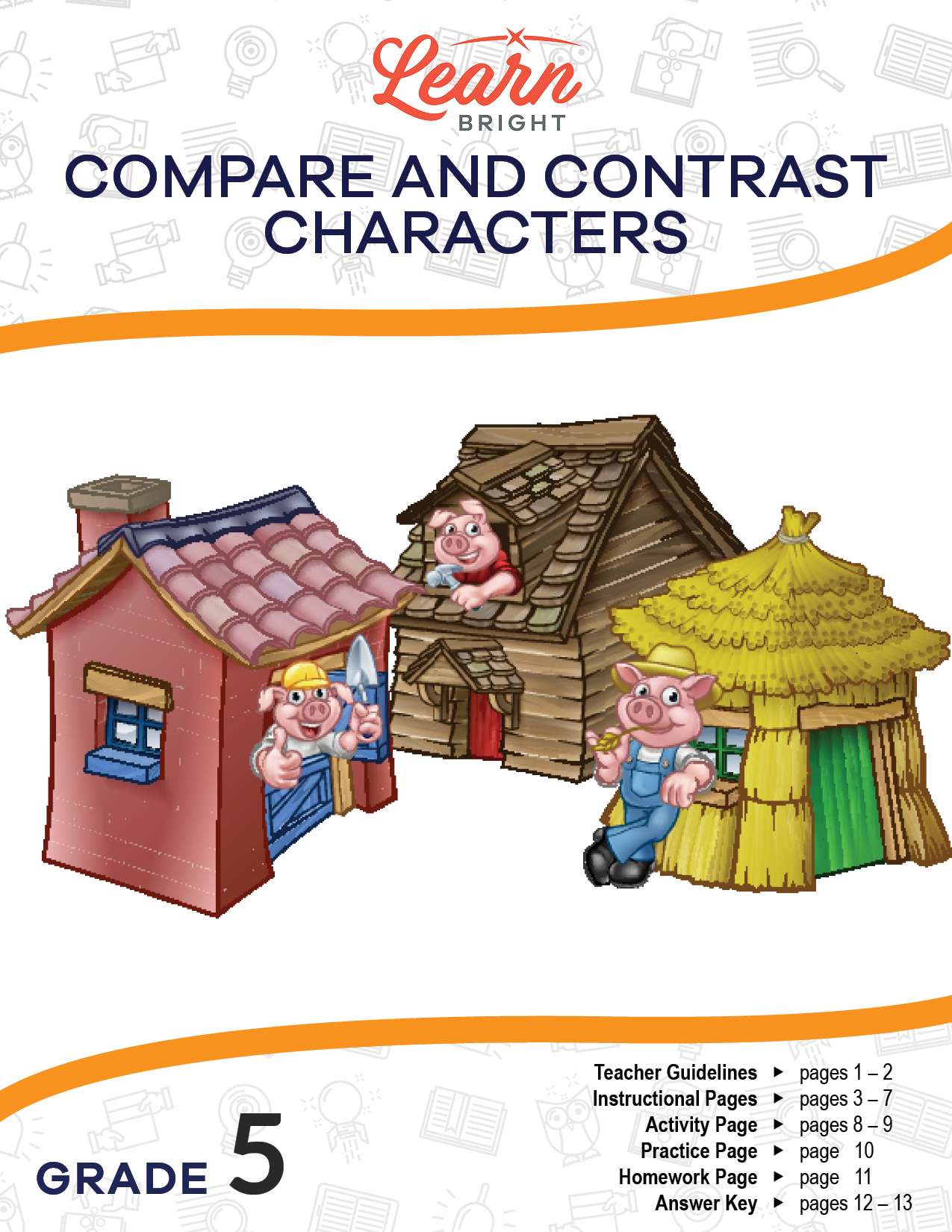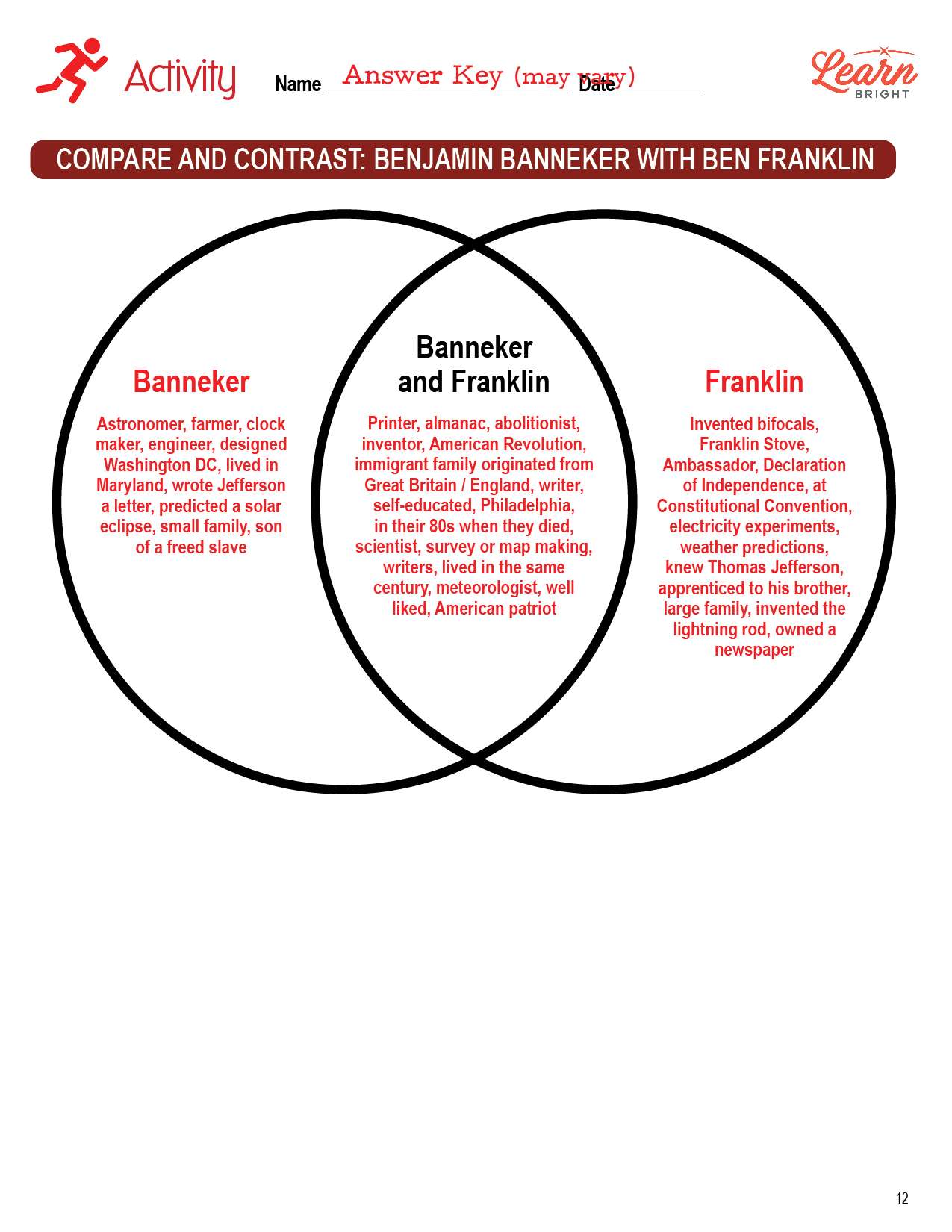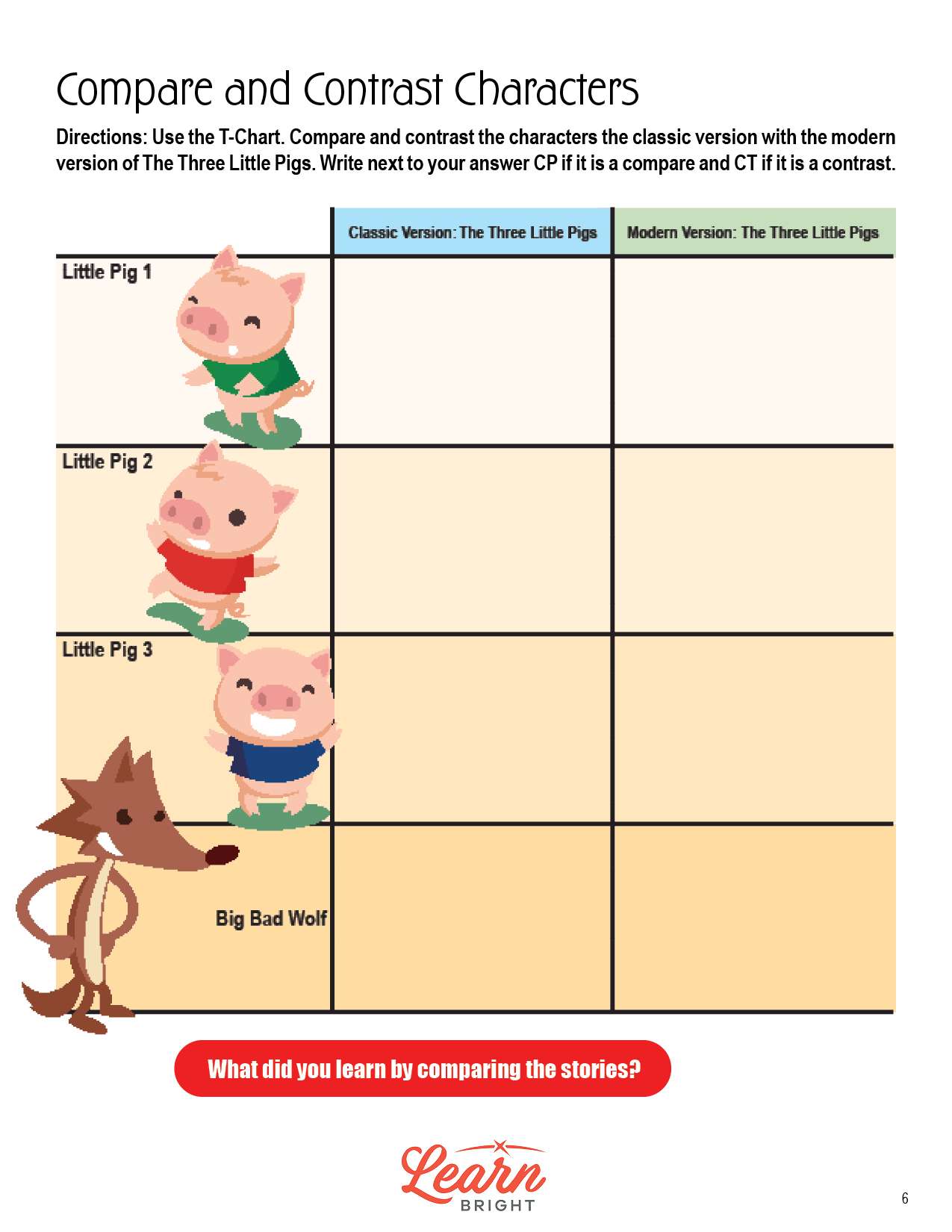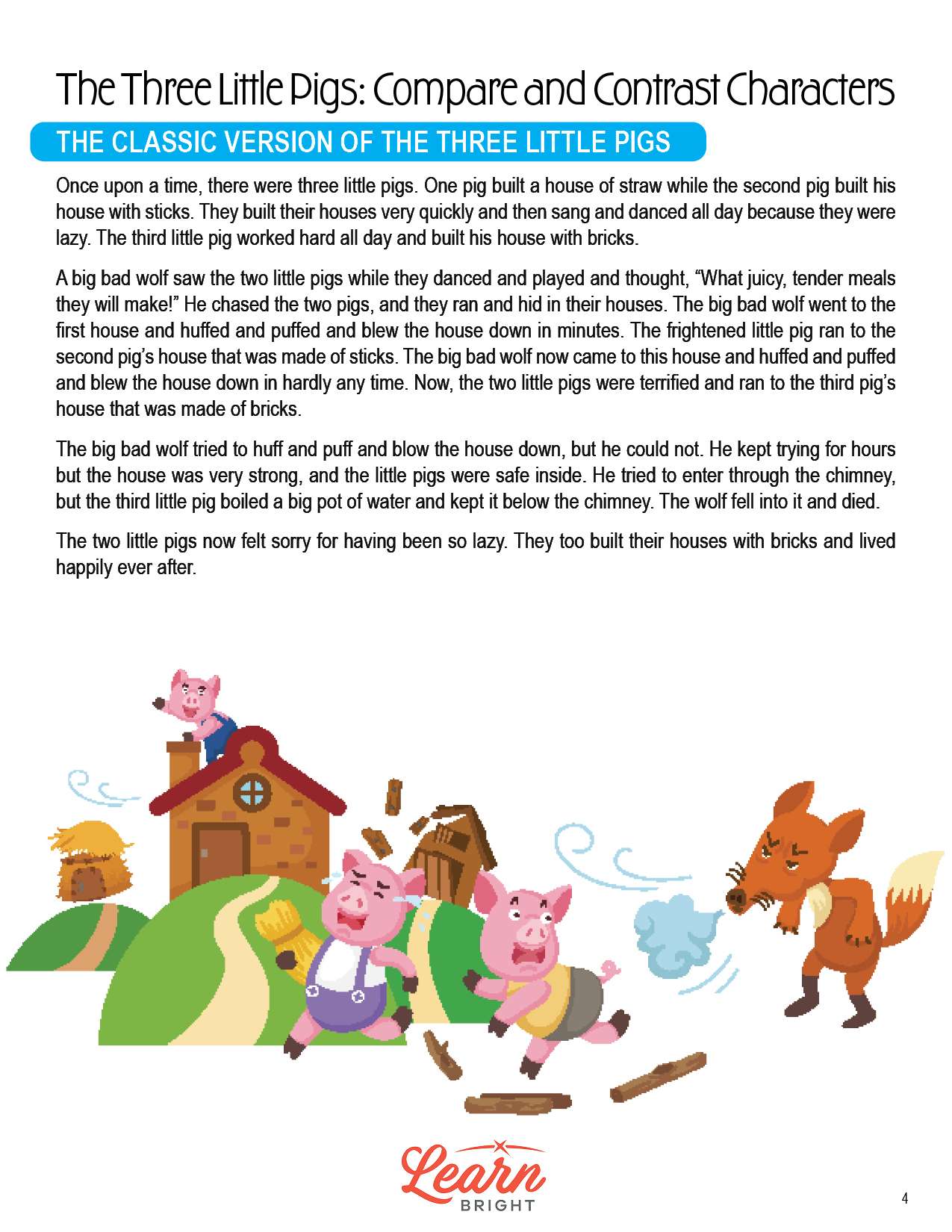Description
What our Compare and Contrast Characters lesson plan includes
Lesson Objectives and Overview: Compare and Contrast Characters teaches students how to effectively compare and contrast two characters as well as how to use a Venn Diagram. At the end of the lesson, students will be able to use an organized strategy to compare and contrast two or more characters in a story drawing on specific details in the text regarding the character’s thoughts, words, actions, decisions, physical attributes, or interactions with others. This lesson is for students in 5th grade.
Classroom Procedure
Every lesson plan provides you with a classroom procedure page that outlines a step-by-step guide to follow. You do not have to follow the guide exactly. The guide helps you organize the lesson and details when to hand out worksheets. It also lists information in the yellow box that you might find useful. You will find the lesson objectives, state standards, and number of class sessions the lesson should take to complete in this area. In addition, it describes the supplies you will need as well as what and how you need to prepare beforehand. The only supplies you will need for this lesson are the handouts; to prepare ahead of time, you can copy the handouts.
Options for Lesson
Included with this lesson is an “Options for Lesson” section that lists a number of suggestions for activities to add to the lesson or substitutions for the ones already in the lesson. One of the optional adjustments to the lesson is to use other stories with characters for students to practice comparing and contrasting. Students can also compare and contrast “characters” from real life, like family members, friends, school personnel, athletes, movie or TV characters, and more.
Teacher Notes
The teacher notes page includes a paragraph with additional guidelines and things to think about as you begin to plan your lesson. It notes that the lesson aims to teach students that, in addition to physical characteristics, things like actions, thoughts, and relationships can also be compared and contrasted. This page also includes lines that you can use to add your own notes as you’re preparing for this lesson.
COMPARE AND CONTRAST CHARACTERS LESSON PLAN CONTENT PAGES
The Three Little Pigs: Compare and Contrast Characters
The Compare and Contrast Characters lesson plan is comprised of two versions of the same story (The Three Little Pigs), a classic version and a modern version, and a page that students will use to practice comparing and contrasting the characters from the two different versions of the story. The lesson also provides a detailed lesson plan, found on the two Classroom Procedure pages.
In the classic version of the Three Little Pigs story, the three pigs live in houses made of different materials. The pigs who built their houses out of straw and sticks had their houses destroyed by a wolf, who blew their houses down. The third pig had built his house out of bricks, which took much longer and was harder work than building it out of straw or sticks. The wolf couldn’t blow his house down, and eventually died. The other pigs then rebuild their houses – out of bricks!
The modern version of the story is similar. The three pigs all decide what materials to build their homes out of using the internet. However, it turns out that their information wasn’t good! One pig decides to use plastic straws, while another decides to use wooden chopsticks. Neither of these are very good building materials! Someone scams the final pig into accepting a free house made of bricks, but the house isn’t even real. The wolf in this version of the story isn’t a bad guy, and doesn’t try to eat the pigs. He simply talks to them about building their houses!
Compare and Contrast Characters
The lesson includes a T-Chart for students to use to compare and contrast the characters from the classic version of the story with the characters from the modern version. At the end, it asks students what they learned by comparing the stories. The lesson also includes some possible answers for this chart that teachers can use.
COMPARE AND CONTRAST CHARACTERS LESSON PLAN WORKSHEETS
The Compare and Contrast Characters lesson plan includes three worksheets: an activity worksheet, a practice worksheet, and a homework assignment. You can refer to the guide on the classroom procedure page to determine when to hand out each worksheet.
COMPARE AND CONTRAST HISTORICAL FIGURES ACTIVITY WORKSHEET
For the activity worksheet, students will read two articles about the historical figures of Benjamin Banneker and Benjamin Franklin. They will then compare and contrast the two men using a provided Venn Diagram.
Students can work either in pairs or groups for this activity, if you’d prefer.
VENN DIAGRAM PRACTICE WORKSHEET
The practice worksheet asks students to read a few paragraphs and compare and contrast the characters in those paragraphs. They will use a Venn Diagram.
COMPARE AND CONTRAST CHARACTERS HOMEWORK ASSIGNMENT
Students will read a story and draw their own Venn Diagram to compare and contrast the Town Mouse and Country Mouse in the provided story.
Worksheet Answer Keys
This lesson plan includes answer keys for the activity worksheet, the practice worksheet, and the homework assignment. If you choose to administer the lesson pages to your students via PDF, you will need to save a new file that omits these pages. Otherwise, you can simply print out the applicable pages and keep these as reference for yourself when grading assignments.









